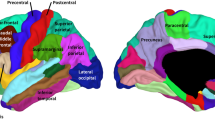Abstract
Simultaneous sign and spoken language training was conducted with young, language-disordered children under standardized training and follow-up conditions with a stringent learning criterion to determine if language learned was stable over time. Twenty-one children between 36 and 86 months with no or nonfunctional language participated in the study. Diagnoses included autism, mental retardation, combined autism and mental retardation, and developmental aphasia. Children completed a mean of 74 signed speech training sessions. Sessions were twice daily, 5 days a week. Follow-up evaluations were made approximately 6 months after training. Of the 21 children, 17 learned at least one word and 7 children learned multiple-word phrases during the training. Most language learned in training was found to be retained at follow-up approximately 6 months later. Gestural imitation, play style, language age, developmental age, and fine motor skills had strong correlations with language learning and retention.
Similar content being viewed by others
References
American Psychiatric Association: (1980).Diagnostic and statistical manual of mental disorders (3rd ed.). Washington, DC: Author.
Barrera, R. D., Lobata-Barrera, D., & Sulzer-Azaroff, B. (1980). A simultaneous treatment comparison of three expressive language training programs with a mute autistic child.Journal of Autism and Developmental Disorders, 10, 21–37.
Bates, E. (1976).Language and context. New York: Academic Press.
Bates, E. (1976).The emergence of symbols: Cognition and communication in infancy. New York: Academic Press.
Benedict, H. (1979). Early lexical development: Comprehension and production.Journal of Child Language, 6, 183–200.
Bonvillian, J. D., Nelson, K. E., & Rhyne, J. M. (1981). Sign language and autism.Journal of Autism and Developmental Disorders, 11, 125–137.
Campbell, D. T., & Stanley, J. C. (1963).Experimental and quasi-experimental designs for research, Chicago: Rand McNally.
Carr, E. G. (1979). Teaching autistic children to use sign language: Some research issues.Journal of Autism and Developmental Disorders, 9, 345–359.
Casey, L. O. (1978). Development of communicative behavior in autistic children: A parent program using manual signs.Journal of Autism and Childhood Schizophrenia, 8, 45–49.
Chapman, R. S., & Miller, J. F. (1980). Analyzing language and communication in the child. In R. L. Schiefelbusch (Ed.),Nonspeech language and communication: Analysis and intervention. Baltimore: University Park Press.
Corrigan, R. (1979). Cognitive correlates of language: Differential criteria yield differential results.Child Development, 50, 617–631.
Curtiss, S. (1981). Dissociations between language and cognition: Cases and implications.Journal of Autism and Developmental Disorders, 11, 15–30.
Flaharty, R. (1976). EPEC: Evaluation and prescription for exceptional children. In E. R. Ritvo, B. J. Freeman, E. M. Ornitz, & P. Tanguay (Eds.),Autism, diagnosis, current research & management. New York: Spectrum.
Gaines, R., Mandler, J., & Bryant, P. (1981). Immediate and delayed story recall of hearing and deaf children.Journal of Speech & Hearing Research, 24, 463–469.
Garcia, E. E., & DeHaven, E. D. (1974). Use of operant techniques in the establishment and generalization of language: A review and analysis.American Journal of Mental Deficiency, 79, 169–178.
Graham, L. W. (1976). Language programming and intervention. In L. L. Lloyd (Ed.),Communication assessment and intervention strategies. Baltimore: University Park Press.
Kiernan, C. (1983). The use of nonvocal communication techniques with autistic individuals.Journal of Child Psychology & Psychiatry & Allied Disciplines, 24, 339–375.
Lombardino, L. J., Willems, S., & McDonald, J. D. (1981). Critical considerations in total communication and an environmental intervention model for the developmentally delayed.Exceptional Children, 47, 455–461.
Lovaas, O. I. (1977).The autistic child. New York: Irvington.
Luria, A. R. (1981).Language and cognition. New York: Wiley.
Piaget, J. (1962).Play, dreams, and imitation in childhood, New York: W. W. Norton.
Remington, B., & Clarke, S. (1983). Acquistion of expressive signing by autistic children: An evaluation of the effects of simultaneous communication and sign-alone training.Journal of Applied Behavior Analysis, 16, 315–328.
Schaeffer, B. (1980). Teaching signed speech to nonverbal children: Theory and method.Sign Language Studies, 26, 29–63.
Shane, H., & Wilbur, R. B. (1980). Predictions of expressive signing potential through assessment of motor capabilities in the severely handicapped.Sign Language Studies, 19, 331–348.
Snow, C. (1981). The uses of imitation.Journal of Childhood Language, 8, 205–212.
Ungerer, J., & Sigman, M. (1981). Symbolic play and language comprehension in autistic children. Journal of the American Academy of Child Psychiatry, 20, 318–337.
Vygotsky, L. S. (1978).Mind in society: The development of higher psychological processes. M. Cole, V. John-Steiner, S. Scribner, & E. Souberman (Eds.). Cambridge, MA: Harvard University Press.
Wulz, S. V., Hall, M. K., & Klein, M. D. (1983). A home-centered instructional communication strategy for severely handicapped children.Journal of Speech & Hearing Disorders, 48, 2–10.
Author information
Authors and Affiliations
Additional information
This project was supported by research grant C 008 100457 to Rosslyn Gaines, from the U.S. Department of Education. The authors thank the Mental Retardation and Child Psychiatry unit at the Neuropsychiatric Institute (NPI), University of California, Los Angeles. D. Guthrie and P. Schroth, NPI, provided excellent statistical consultation and computer analyses to the project. Sue Knell and Mirla Geclewicz, NPI, were a great help in the pilot study. Manette McDermott, NPI, kindly supplied additional language age information on each child in the study. The project was graced by the help of a dedicated crew of student research assistants who carried out the communication training and data collection. Our appreciation goes to Gita Amona, Anne-Lauren Arenson, Cara Churchill, Joan Gilbert, Sandy Hansen, Michko Katamini, Scott Krishel, Pam Mabry, Diane Maler, Vicki McWain, Rosela Mendoza, Mona Mosk, Gina Raymond, Carrie Rogers, Mari Takahashi, Sharon Tsunishi, Linda Weinstein, Elaine Wienowksi, Elizabeth Wilhite, Karyn Wood, and Marisa Zarate. Portions of this paper were presented at the Society for Research in Child Development meeting, Detroit, April 1981.
Rights and permissions
About this article
Cite this article
Gaines, R., Leaper, C., Monahan, C. et al. Language learning and retention in young language-disordered children. J Autism Dev Disord 18, 281–296 (1988). https://doi.org/10.1007/BF02211953
Issue Date:
DOI: https://doi.org/10.1007/BF02211953




